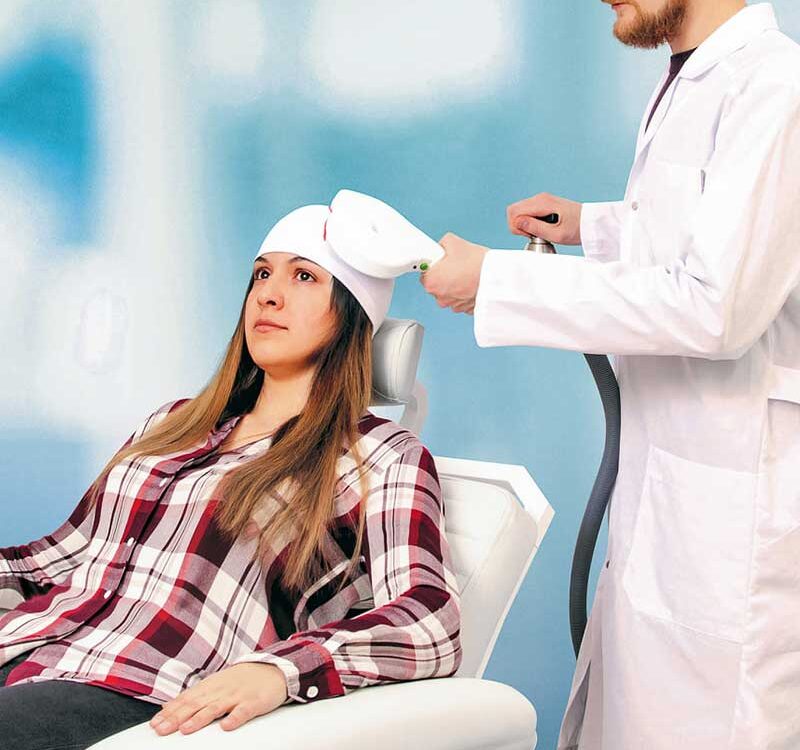TMS is performed in the privacy of the office, without the need for prior preparation, anesthesia, sedation, or hospitalization.
The patient undergoing the treatment is fully awake and alert, feeling the magnetic pulses as a light tapping sensation on the scalp while sitting in a comfortable chair, chatting or relaxing.
The scalp is protected with a cloth cap.
At the end of the session, the patient can resume their work and family routine, going home or to work on their own. Therefore, TMS allows you to continue with your personal, family or work life after the treatment sessions.
Advantages of TMS
- It is not invasive.
- Does not require electrode implantation.
- Does not require hospitalization.
- The patient can immediately return to his/her daily activities.
- It does not require any type of anesthesia or sedation.
- It does not interfere with other pharmacological treatments.
- It does not produce systemic or serious side effects.
- No prior preparation required.
How is the protocol for transcranial magnetic stimulation therapy?
There are different protocols, the most common uses five sessions per week, from Monday to Friday, between 20 and 37 minutes, until reaching a total of between 10 and 30 sessions, depending on the disease(s) that is being treated.
Before starting, the doctor must develop the treatment protocol according to the patient’s diagnosis. The area of the brain where the coil should be located, the intensity and frequency of magnetic pulses will be identified.
Once this acute phase has been completed, and depending on the patient’s clinical diagnosis, the administration of maintenance sessions may be recommended, with a weekly, biweekly, monthly or semiannual frequency.


